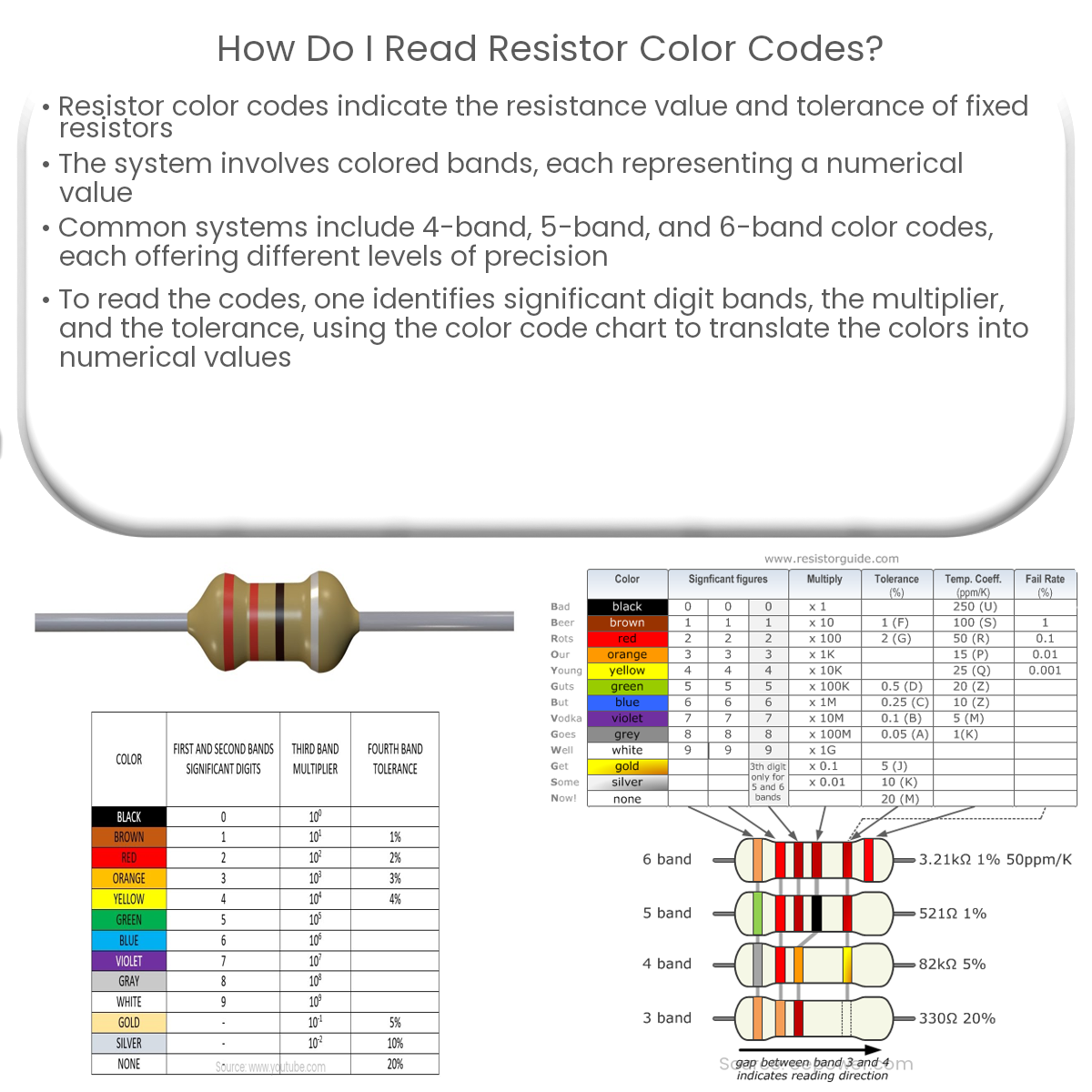Resistor color codes use colored bands to indicate resistance value and tolerance. Read the bands in sequence and use a chart to translate the values.
Understanding Resistor Color Codes
Resistor color codes are a system used to indicate the resistance value and tolerance of fixed resistors. This article will explain how to read and interpret these color codes, enabling you to identify the properties of a resistor quickly and accurately.
Color Code Basics
Resistor color codes consist of a series of colored bands painted on the resistor’s body. Each color represents a numerical value, and the sequence of colors indicates the resistance value and tolerance. The most common system is the 4-band color code, but there are also 5-band and 6-band color codes for higher-precision resistors.
4-Band Color Code
The 4-band color code consists of the following bands:
- First Band: Represents the first significant digit of the resistance value.
- Second Band: Represents the second significant digit of the resistance value.
- Third Band: Represents the multiplier, indicating the power of ten by which the first two digits should be multiplied.
- Fourth Band: Represents the tolerance, which indicates the range within which the actual resistance value may deviate from the nominal value, expressed as a percentage.
5-Band and 6-Band Color Codes
The 5-band and 6-band color codes follow a similar pattern, with an additional band to represent the third significant digit of the resistance value. The 6-band color code also includes a temperature coefficient band.
Color Code Chart
The colors and their corresponding numerical values are as follows:
- Black – 0
- Brown – 1
- Red – 2
- Orange – 3
- Yellow – 4
- Green – 5
- Blue – 6
- Violet – 7
- Gray – 8
- White – 9
For the tolerance band:
- Gold – ±5%
- Silver – ±10%
- None – ±20%
For the temperature coefficient band in the 6-band color code:
- Brown – 100 ppm/°C
- Red – 50 ppm/°C
- Orange – 15 ppm/°C
- Yellow – 25 ppm/°C
Reading Color Codes
To read a resistor’s color code, start by identifying the first significant digit band, followed by the remaining significant digit bands, the multiplier, and the tolerance. Use the color code chart to translate the colors into numerical values, and then calculate the resistance value and tolerance range.
In conclusion, understanding resistor color codes is essential for accurately identifying resistors and their properties. Familiarizing yourself with the color code chart and the band sequences will enable you to interpret resistor color codes with ease.


